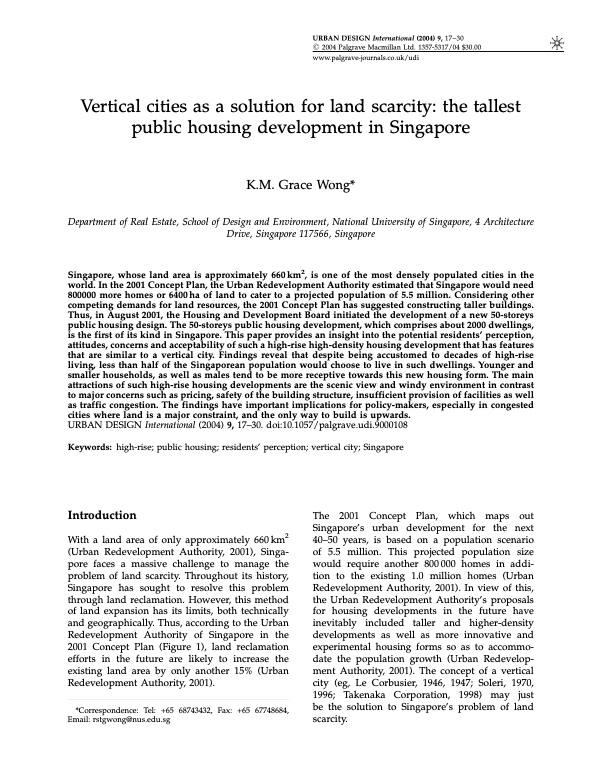Vertical cities as a solution for land scarcity: the tallest public housing development in Singapore
Singapore, whose land area is approximately 660km2, is one of the most densely populated cities in the world. In the 2001 Concept Plan, the Urban Redevelopment Authority estimated that Singapore would need 800000 more homes or 6400 ha of land to cater to a projected population of 5.5 million. Considering other competing demands for land resources, the 2001 Concept Plan has suggested constructing taller buildings. Thus, in August 2001, the Housing and Development Board initiated the development of a new 50-storeys public housing design.






